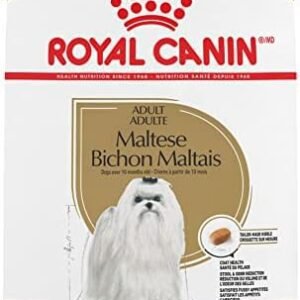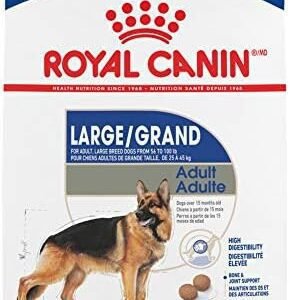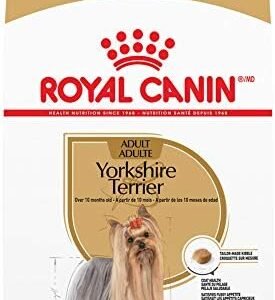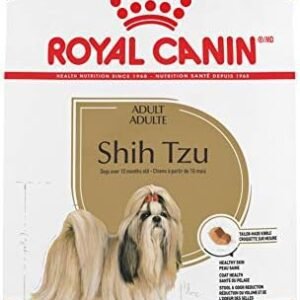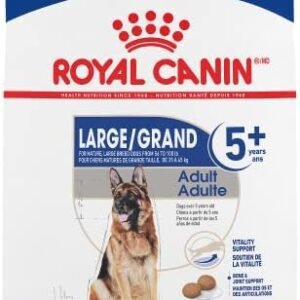Introduction
Are you aware of the culinary delight that chestnuts bring to humans? These warm and buttery morsels are often enjoyed during the winter holidays, roasting by the open fire. But what about our canine companions? Can dogs eat chestnuts too? While dogs may be curious about many human foods, not everything that’s safe for us is safe for them. In this article, we’ll explore the world of chestnuts and see if they can be part of your dog’s diet. We’ll discuss the potential benefits and risks, proper serving sizes, and what to look out for to keep your furry friend happy and healthy. So, can dogs eat chestnuts? Let’s find out.

Table of Contents
Can dogs eat Chestnuts?
Chestnuts, a cherished wintertime treat for many, may leave your dog looking curious and hopeful when you’re indulging in these delightful nuts. But can dogs eat chestnuts? Let’s dive into this crunchy topic to discover whether chestnuts are a safe and nutritious addition to your dog’s diet.
Safety of Chestnuts for Dogs
Chestnuts, unlike some other nuts, are not toxic to dogs when prepared and served correctly. These nuts are relatively mild and less fatty than many other nut varieties. This lower fat content can be a plus, as it reduces the risk of pancreatitis, a painful inflammation of the pancreas that can be triggered by high-fat foods.
Nutritional Value of Chestnuts
To understand if chestnuts can be a part of your dog’s diet, let’s take a closer look at their nutritional composition. Chestnuts provide several essential nutrients, which can be beneficial for dogs when consumed in moderation. Here’s a breakdown of the key nutrients found in chestnuts:
Carbohydrates: Chestnuts are rich in carbohydrates, primarily in the form of starch. While dogs primarily thrive on protein, they can still benefit from moderate carbohydrate consumption for energy.
Dietary Fiber: Chestnuts are a good source of dietary fiber, which can support a dog’s digestive health by promoting regular bowel movements.
Protein: These nuts contain some protein, which is essential for muscle development and overall growth. However, chestnuts have relatively low protein content compared to other nuts.
Vitamins and Minerals: Chestnuts offer several essential vitamins and minerals that can contribute to a dog’s well-being. These include vitamin C, vitamin B6, folate, and essential minerals like potassium and magnesium.
Low in Fat: Chestnuts are notably lower in fat compared to many other nuts, reducing the risk of pancreatitis in dogs.
Health Benefits for Dogs
The presence of dietary fiber, vitamins, and minerals in chestnuts can offer some health benefits to your dog. These nutrients can support your dog’s overall well-being and provide an energy boost, which can be particularly helpful for active dogs. However, chestnuts should not replace your dog’s primary diet but can be offered as an occasional treat.
Drawbacks and Risks
Despite the potential benefits, there are also some drawbacks and risks to consider when feeding chestnuts to dogs:
Portion Control: Moderation is key. While chestnuts can be included in your dog’s diet, they should only be served in small, manageable portions. Excessive consumption can lead to digestive upset, including diarrhea.
Allergic Reactions: Dogs, like humans, can be sensitive or allergic to certain foods. Chestnuts may cause allergies or intolerances in some dogs. Watch for signs of allergies, such as itching, vomiting, or diarrhea, after introducing chestnuts to your dog’s diet.
Preparation Matters: Chestnuts must be roasted or boiled before serving to dogs. Raw chestnuts contain tannins that can be difficult to digest and may upset a dog’s stomach. Always peel and cook the chestnuts, ensuring they are plain and unsalted.
High in Calories: Chestnuts, while low in fat, are relatively high in calories due to their carbohydrate content. Feeding them excessively can lead to weight gain. Be mindful of your dog’s calorie intake, and adjust their regular meals to accommodate chestnut treats.
Choking Hazard: Chestnuts are hard and round, posing a choking risk. It’s essential to cut them into smaller, bite-sized pieces before offering them to your dog. This reduces the risk of choking and makes it easier for your dog to enjoy them safely.
Summary
In conclusion, dogs can indeed enjoy chestnuts as an occasional treat. These nuts provide a range of essential nutrients, including carbohydrates, dietary fiber, vitamins, and minerals. When prepared correctly and served in moderation, chestnuts can be a tasty and nutritious addition to your dog’s diet. However, it’s vital to exercise caution and be mindful of potential allergies, portion sizes, and the method of preparation. While chestnuts can be a delightful snack for your furry friend, they should complement, not replace, your dog’s primary diet.
How much Chestnuts can a dog eat?
As the saying goes, “everything in moderation.” This is particularly true when it comes to feeding chestnuts to your dog. While chestnuts can offer some nutritional benefits, it’s crucial to exercise restraint and carefully consider the portion sizes for your furry companion.
Moderation is Key: The most critical aspect of feeding chestnuts to your dog is moderation. Treats, including chestnuts, should constitute only a certain percentage of your dog’s daily calorie intake. A general guideline is that treats should make up no more than 10% of your dog’s daily caloric intake. This ensures that the majority of their nutrition comes from their regular dog food, which is formulated to meet their dietary requirements.
Start Small: If you’ve never offered your dog chestnuts before, it’s a good practice to start with a small piece and observe how your dog reacts. Some dogs may take to chestnuts with enthusiasm, while others may be less interested. The initial trial allows you to gauge your dog’s preferences and any potential sensitivities or allergies. Always monitor your dog closely during this introductory phase.
Proper Preparation: Chestnuts should be prepared in a specific way before offering them to your dog. Raw chestnuts are challenging to digest due to their tannin content and can lead to stomach upset. It’s essential to roast or boil chestnuts and ensure they are plain and unsalted. Once prepared, chestnuts should be cut into smaller, bite-sized pieces to minimize the choking hazard.
Size and Breed Variations: The size and breed of your dog can affect how much chestnuts they can safely tolerate. Generally, a larger dog may be able to eat more chestnuts without any issues compared to a smaller dog. However, it’s crucial to consider your dog’s individual needs and tolerances. Some small dogs may have sensitive stomachs, while some large dogs may be prone to obesity, so it’s always advisable to consult your veterinarian for personalized recommendations.
Appropriate Serving Sizes: The ideal serving size of chestnuts for your dog depends on their weight. As a general rule, it’s recommended to feed approximately 1 to 2 small chestnut pieces per 10 pounds of your dog’s body weight. Adjust the serving size accordingly, ensuring that it remains within the 10% limit of your dog’s daily calorie intake.
In summary, when it comes to feeding your dog chestnuts, remember that moderation is essential to prevent potential health issues. Starting with small portions, correctly preparing the chestnuts, and considering your dog’s size and breed are all crucial steps in ensuring their safety and enjoyment. Always keep an eye on your dog for any adverse reactions and consult your veterinarian if you have any concerns or questions about the ideal serving sizes based on your dog’s specific needs.
What are the Risks of Feeding Chestnuts to Dogs?
While chestnuts can be a tasty and nutritious treat for dogs when offered in moderation, it’s crucial to be aware of the potential risks and adverse reactions that could arise from feeding them. This section will explore some of the associated risks, signs of food intolerance, and specific hazards that may be associated with chestnut consumption by dogs.
Food Allergies: Dogs can develop allergies to various foods, and chestnuts are no exception. Food allergies in dogs can manifest as itching, skin problems, digestive issues, and more. Some dogs may be allergic to specific components of chestnuts. Signs of a food allergy can include itching, redness or inflammation of the skin, ear infections, vomiting, diarrhea, and excessive licking or scratching.
Short-Term Signs of Food Intolerance: Food intolerance can cause short-term discomfort in dogs. For some dogs, chestnuts may lead to gastrointestinal distress, including symptoms like upset stomach, gas, diarrhea, or vomiting. It’s essential to observe your dog closely, particularly after introducing chestnuts for the first time, to monitor their reaction and detect any signs of food intolerance.
Potential Hazards in Chestnuts: Chestnuts contain certain components that can be problematic for dogs. Firstly, raw chestnuts have a high tannin content, which can be challenging to digest and may lead to stomach upset. To mitigate this, chestnuts should be cooked before feeding to dogs. Another potential issue is the choking hazard, as whole chestnuts can be a sizeable and hard treat. It is advisable to cut chestnuts into smaller, manageable pieces to reduce the risk of choking.
Allergic Reactions: Allergic reactions in dogs can vary from mild to severe. While chestnuts are generally safe for dogs, there is always a slight possibility of an allergic reaction. Watch out for signs of an allergic reaction, which can include hives, facial swelling, difficulty breathing, or collapse. In severe cases, allergies can escalate quickly, leading to anaphylactic shock, which is a life-threatening emergency.
Specific Issues: Some dogs might be more prone to certain issues related to chestnut consumption. For instance, dogs with sensitive stomachs or pre-existing digestive conditions may experience more significant discomfort or adverse reactions. Similarly, small dogs may have a more challenging time digesting chestnuts due to their size and digestive capacity. It’s essential to consider your dog’s individual health and needs.
Signs and Symptoms of Adverse Reactions: Adverse reactions in dogs may manifest through a range of symptoms, including but not limited to vomiting, diarrhea, lethargy, excessive salivation, difficulty breathing, trembling, or seizures. Recognizing these signs promptly is essential to take the necessary steps to address any adverse reactions.
In summary, while chestnuts can be a delightful treat for your dog, it’s essential to be vigilant about the potential risks, signs of food intolerance, and allergies. Be mindful of your dog’s individual needs, size, and sensitivities. If you notice any adverse reactions or suspect an allergy, consult your veterinarian promptly. Providing chestnuts in moderation, carefully prepared, and in suitable portions is the best approach to keep your furry friend safe and satisfied.
How to Feed Chestnuts to Your Dog and Make it More Enjoyable for Them
Now that we’ve covered the potential risks and benefits of feeding chestnuts to your dog, let’s delve into ways to make the experience enjoyable and safe for your furry companion. Discover how you can incorporate chestnuts into your dog’s diet, use them for homemade treats, and enhance your dog’s meals creatively.
Feeding Methods: Chestnuts can be integrated into your dog’s diet in various ways. While it’s essential to ensure the chestnuts are cooked to enhance digestibility and safety, you can serve them as a tasty occasional treat or mix them with your dog’s regular food. Consider cutting them into bite-sized, manageable pieces to prevent choking hazards. The occasional chestnut can add variety to your dog’s diet.
Homemade Treats and Snacks: Chestnuts can also be used to create homemade dog treats or snacks. By incorporating them into treat recipes, you can provide your dog with a delicious and nutritious reward. One popular option is to prepare homemade chestnut dog biscuits. These treats can be customized with your dog’s favorite ingredients and shaped into fun designs. Homemade snacks with chestnuts allow you to control the ingredients and avoid harmful additives, making them a healthier alternative to store-bought options.
Enhancing Your Dog’s Meals: If you’d like to enhance your dog’s regular meals with chestnuts, consider preparing them in a dog-friendly way. Cooked and mashed chestnuts can be mixed with your dog’s food to add flavor and nutritional benefits. This method allows you to introduce chestnuts as a part of your dog’s daily meals while keeping their diet balanced.
Creative Dog Recipes: To make the dining experience enjoyable for your dog, explore creative dog recipes that incorporate chestnuts. You can prepare meals with chestnut puree, vegetables, and lean proteins like chicken or turkey. These recipes can provide a flavorful twist to your dog’s meals. Keep in mind that the recipes should be free of harmful ingredients such as onions, garlic, or excessive salt. Safe and healthy preparation is the key to creative dog cuisine.
Chestnut Treat Recipes: Here are a couple of simple chestnut treat recipes that your dog may adore:
Chestnut and Apple Biscuits: Combine mashed, cooked chestnuts with unsweetened applesauce and oat flour to form a dough. Cut out bone-shaped biscuits and bake until they are golden brown.
Chestnut and Sweet Potato Delights: Mix cooked and mashed chestnuts with cooked sweet potatoes and lean ground turkey. Form them into small balls and bake until they are cooked through. Your dog will enjoy this delectable treat.
By incorporating chestnuts into your dog’s diet through safe cooking methods and creative recipes, you can add variety to their meals and offer them a delightful treat. Remember that moderation is key, and always observe how your dog reacts to new additions to their diet. Chestnuts can be a flavorful and nutritious option when prepared with your dog’s health and safety in mind.
10 FAQs About Dogs Eating Chestnuts
As the topic of feeding chestnuts to dogs is a common point of concern, let’s address some frequently asked questions regarding chestnuts and their safety for your canine companion.
Can Dogs Safely Eat Chestnuts?
- While chestnuts aren’t inherently toxic to dogs, they must be prepared and fed with caution. Cooked chestnuts can be safe when given in moderation, but uncooked or spoiled chestnuts can be harmful.
Are Raw Chestnuts Safe for Dogs?
- Raw chestnuts are not safe for dogs. They contain tannins and other compounds that can be hard to digest and lead to stomach upset or blockages. Always ensure chestnuts are thoroughly cooked before offering them to your dog.
Can Chestnuts Be a Regular Part of My Dog’s Diet?
- Chestnuts should not become a regular staple in your dog’s diet. They can be given occasionally as a treat or incorporated into homemade dog snacks.
What Nutrients Do Chestnuts Provide for Dogs?
- Chestnuts offer several essential nutrients, including dietary fiber, vitamins, and minerals. They are a good source of vitamin C, potassium, and vitamin B6, which can benefit your dog’s health in moderation.
Can Chestnuts Help My Dog’s Coat Shine?
- The vitamins and minerals in chestnuts can contribute to a healthy coat, but their primary purpose in your dog’s diet should be as an occasional treat rather than a coat supplement.
How Should Chestnuts Be Prepared for Dogs?
- Chestnuts should be cooked thoroughly before serving them to your dog. Boiling or roasting them is advisable, and they should be free of salt, seasonings, or additives.
What Are the Signs of Chestnut Allergies in Dogs?
- Signs of chestnut allergies in dogs can include vomiting, diarrhea, excessive drooling, or an upset stomach. If you observe any of these symptoms, discontinue feeding chestnuts and consult your veterinarian.
Are There Any Dangerous Chestnut-Related Ingredients to Avoid?
- Yes, certain ingredients commonly used with chestnuts, such as onions, garlic, or excessive salt, can be harmful to dogs. Always ensure that chestnut-based recipes are free from these toxic ingredients
How Can I Safely Incorporate Chestnuts into My Dog’s Diet?
- To safely incorporate chestnuts, cook them thoroughly and offer small, bite-sized portions as an occasional treat or as part of homemade dog treats. Observe how your dog reacts to chestnuts, and ensure they’re well-tolerated.
What Should I Do If My Dog Eats Raw or Spoiled Chestnuts?
- If your dog accidentally consumes raw or spoiled chestnuts, monitor them closely for signs of distress, including vomiting, diarrhea, or discomfort. If symptoms persist or worsen, contact your veterinarian promptly.
Can Chestnuts Cause Food Allergies in Dogs?
- While food allergies can occur in dogs, chestnuts themselves are not among the most common allergenic foods. However, individual dogs may have allergies or sensitivities to specific ingredients. If you suspect your dog has a food allergy, consult your veterinarian for guidance on an elimination diet.
Are Chestnuts Better Than Other Nut Treats for Dogs?
– Chestnuts can be a suitable treat for dogs due to their lower fat content compared to some other nuts. However, moderation is key, and the safety of chestnuts lies in their proper preparation and serving size.
By addressing these frequently asked questions, we aim to provide you with a better understanding of feeding chestnuts to dogs and the importance of safe and moderate consumption. Always prioritize your dog’s well-being when introducing new foods into their diet.
Conclusion
In conclusion, the topic of whether dogs can safely eat chestnuts is one that requires careful consideration. While chestnuts themselves are not inherently toxic to dogs, they come with certain caveats. The safety of chestnuts for your canine companion lies in how they are prepared, served, and integrated into their diet.
Chestnuts can be enjoyed by dogs in small amounts as an occasional treat. However, it’s crucial to be aware of the potential risks associated with their consumption. Raw or spoiled chestnuts can lead to digestive issues, and any additives, seasonings, or harmful ingredients should be avoided. Dogs with known food allergies should also steer clear of chestnuts.
As with any treat, moderation is key. Chestnuts should not replace your dog’s primary diet and should make up only a small portion of their overall caloric intake.
For those looking to diversify their dog’s snack options, there are safer alternatives available. Fruits like apples, blueberries, and watermelon are not only delicious but also packed with essential nutrients. Homemade dog treats using dog-safe ingredients are another great way to pamper your furry friend.
We hope this article has shed light on the considerations surrounding dogs and chestnuts. If you have any questions or comments on feeding chestnuts to your dog or if you’ve had any experiences to share, feel free to engage with us in the comment section below. Your dog’s well-being is paramount, and making informed choices about their diet is an essential part of responsible pet ownership.




















